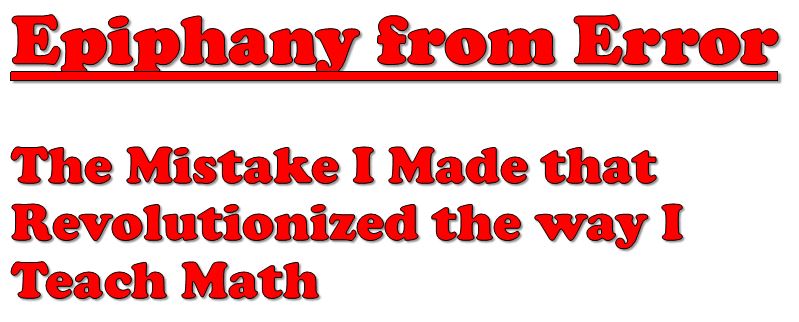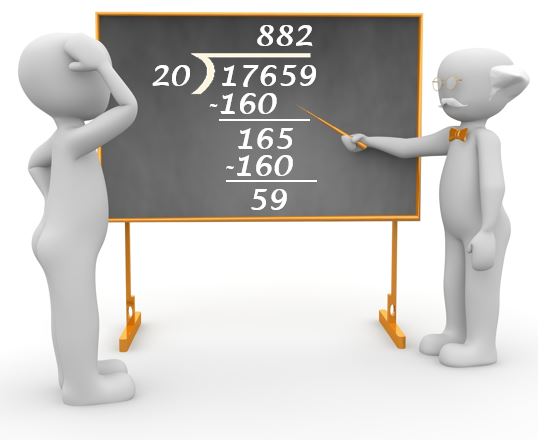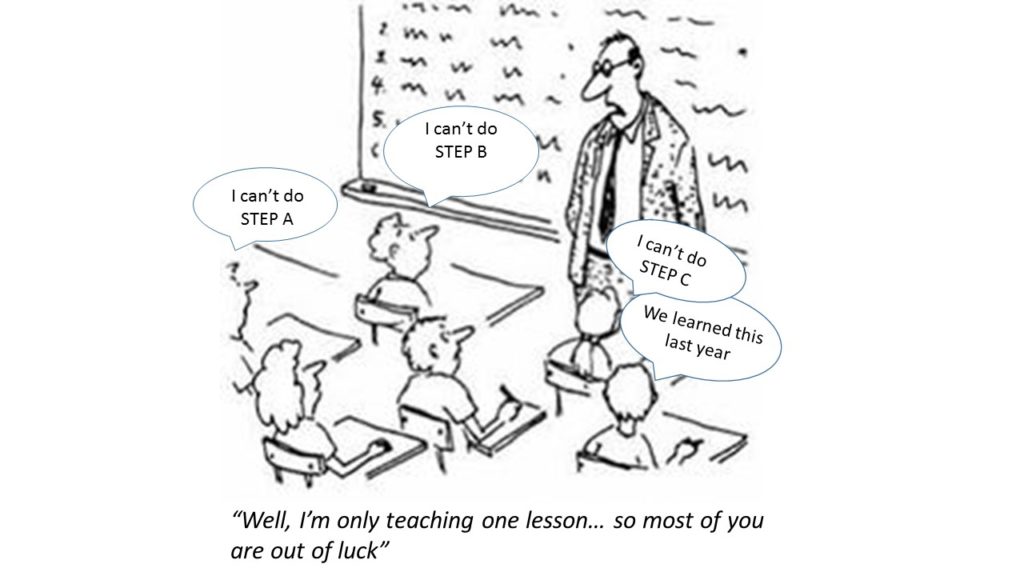

In my first year teaching intensive math to Pre-Algebra students, I was very frustrated with my students’ lack of basic skills. So I began teaching the fundamentals: times tables, place values, and working with decimals. I then moved on to division. I mean, everyone should know how to divide, right?
Considering myself an excellent teacher, I spent several days presenting the instructions in different formats: we watched videos, I used manipulatives, we made posters with the rules on them, and we even did an interactive notebook entry; complete with its own foldable and creative reflection for the students to utilize. Not to mention a VERY healthy dose of practice was administered in each class period.
By the end of the week, I knew that I had done an excellent job, and I gave my students the test. To my shock, the students did not do much better on that test then they had done on the pre-test I had given prior to beginning the lesson.
I expressed my disappointment to my students, and began my reteach. More learning activities, more videos, and MORE PRACTICE! But again, to my dismay, after a second week of this, the students were still not displaying mastery.
Week 3 was more of the same! I couldn’t believe it! Three weeks, one hour each day, focusing only on division, and my students were not showing progress.
I was forced to rethink everything I thought I knew. And I came to several conclusions:
They teach division in 4th grade, long division in 5th, division with decimals in 6th, and converting fractions to decimals using division in 7th – all without the calculator. Despite 4 years of this instruction, my 8th grade pre-algebra students had not learned it. Why was I so arrogant to think that I could teach it to them in 4 days?
Yes, I understand that we use division, and that the ability to do long division has a myriad of benefits to the learner. But really, if you’re not a math teacher, how often do you use long division in the real world? And when you do, when are you ever using it without a calculator? And if you are doing long division without a calculator…. Why?
I have worked in many fields prior to becoming a teacher. Rarely had I ever done division, and never without a calculator, or without building a function in Microsoft Excel.
This one hit me like a load of bricks. I started really looking at the standards for pre-algebra. And you’ll never guess how often long division is there.
NEVER!
There’s some short division, usually with two step equations, but never long division without a calculator. So why was I stressing it? I had in essence wasted 3 weeks, when we could have been focusing on a standard that they will be tested on.
And in light of my previous revelation (the one where I realized that none of us use long division in the real world without a calculator), this seemed colossally stupid.
Finally, and most importantly, I realized that long division, like many skills in math, is a combination of many skills that the student must be proficient in before he/she can properly use them to complete this task.
For example, before a student can do long division, first she must know her times tables. Then she must be able to subtract. Finally, she must understand place values. And if there’s decimals or remainders, there are more skills to understand.
As I worked with my students during these 3 eye-opening weeks. I saw different students struggling in different places. I realized that if I was to truly teach the concept, I would have to break it into all its prerequisite skills, and give students appropriate practice within the concept they were weak in.
I could show the steps of long division all day, until I was blue in the face, if the student didn’t know his times tables, she would never grasp long division.
This final revelation changed the way I teach permanently. Now, I break a skill down into mini skills and chart them sequentially. Students work on one mini skill, until they master it, and then are moved to the next mini skill, and so on, until the have mastered the standard completely.
For example, if I am teaching how to solve systems of linear equations by graphing, I will chart all the skills needed to complete this one skill.
- Graphing and identifying points
- Slope
- Graphing linear equations
- Graphing and solving systems of linear equations
Finally,
- I grade students for successes, not for failures
- I give the student as much practice as he/she needs to master the skill (they can stay in one station as long as it takes)
- I provide immediate feedback (answer keys and calculators are easily accessible, or the work is done online with automatic feedback)
- I don’t promote students to the next skill, until they demonstrate proficiency.
In other words, I don’t penalize experimentation, and I expect mastery. As opposed to the old way of teaching, where we don’t expect mastery – we promote everyone to the next skill regardless of their grade – and we penalize failure.








